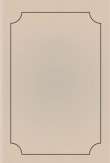قراءة كتاب Home Geography for Primary Grades
تنويه: تعرض هنا نبذة من اول ١٠ صفحات فقط من الكتاب الالكتروني، لقراءة الكتاب كاملا اضغط على الزر “اشتر الآن"
What direction is that?
In what direction does your shadow fall at sunrise? At sunset? At noon? When, during the day, is your shadow shortest?
 |
|
WHAT MAY WE DISCOVER BY WATCHING THE SMOKE?
|
In what direction does your shadow extend from yourself when it is shortest?
What time of day is noon? How can we tell when it is noon? When is the sun highest in the sky?
What may we discover by watching the direction of the smoke from the chimneys? What does a vane on a steeple tell us? What is a north wind? A south wind? An east wind? A west wind?
What kind of weather may be expected from a north wind? From a south wind? From an east wind? From a west wind?
Write all that you can tell about the wind.
What was the direction of the wind during the last snow-storm? Why is the north wind cold? Why is the south wind warm?
To tell where a place is, we must know its direction. But this is not all; we must also know how far it is from us; that is; its distance. To find this out we measure.
You have often heard of an inch, a foot, and a yard. This line is one inch long:

Your ruler is twelve inches long, that is a foot. Three lengths of your ruler make a yard. A yard stick is three feet long.
 |
|
MEASURING SHORT DISTANCES.
|
With these measures you can tell how long your slate or your desk is, or how long and wide the schoolroom is.
The inch, foot, and yard are used for measuring short distances. But when we wish to tell the distance between objects far apart, we use another measure called a mile. A mile is much longer than a yard.
Think of some object that is a mile from our schoolhouse. How long would it take you to walk that distance?
 |
|
MEASURING LONG DISTANCES.
|
ORAL EXERCISES.
How many inches long is your slate? How long is your desk? How many feet long is your room? How wide is it? What is the distance around the room? How many feet wide is each window? Each door? How many yards wide is the nearest street or road?
About what is the height of the schoolroom? Of the schoolhouse? Of the tallest tree near by? Of the nearest church spire?
About how long is the longest street in the town where you live? Do you know how many blocks or squares make a mile? Name the nearest river or creek. Give its direction from the school. In what direction does the water run? Give the direction and distance of the nearest church. What must you know to go to any place?
NOTE.--Have pupils estimate distances by the eye, then verify by actual measurement. Continue the exercises until the work becomes quite accurate. Correct ideas of distance are necessary in order to understand how large the world is, and how far apart places are on its surface.
You all know what a picture is. But do you know what a plan is?
A little boy wanted to show his cousin, who lived some miles away; the shape and size of his house, and how the rooms were arranged. How could he do this?
On a large sheet of white paper, he placed lines of blocks in the form of his house. Then, with a lead pencil, he drew a line on the paper along the sides of the blocks. He next took up the blocks, and there, on the paper, was a plan of his house.
 |
|
THE PICTURE SHOWS THE OBJECTS.
|
Here is a picture of a schoolroom. We see desks, the teacher's table, a chair, a clock, globe, and two maps, in the picture. The picture shows these objects as they would appear if we stood at the door behind the teacher's table and looked in.
This is a plan of the schoolroom, a picture of which is shown above. You see, the plan and picture are quite different.
 |




